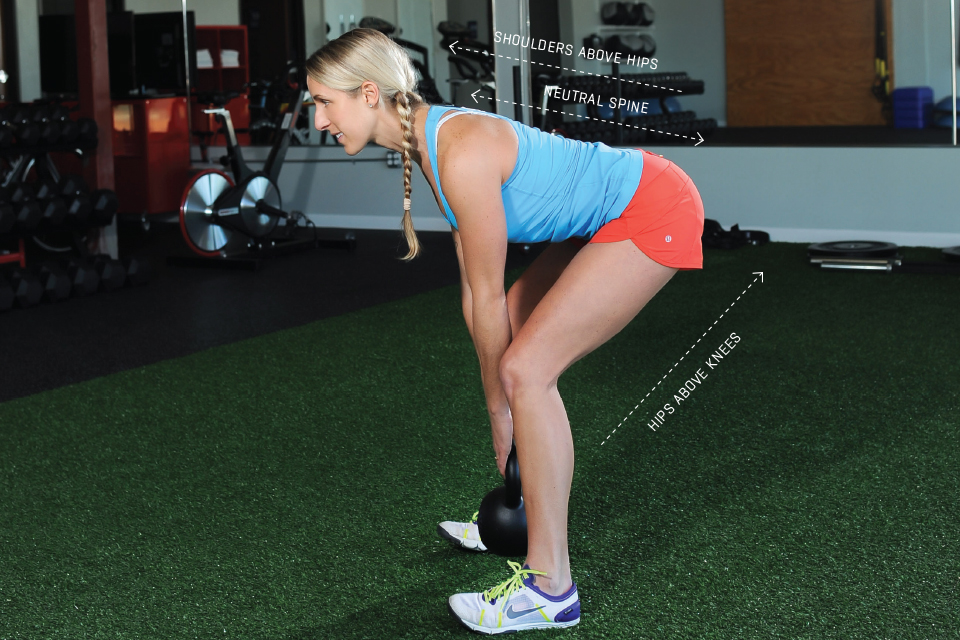Do’s and Don’ts of the Deadlift

The popular exercise the deadlift is known well in the bodybuilding world for boosting muscle on the back of the legs, hamstrings and glutes.
In the performance training world the deadlift is known for its ability to build strength in the main power boosters for sprinting and jumping.
In our everyday world, we use the deadlift for maintaining the key hip hinge movement that allows us to correctly shift our center of mass and use the stronger muscles around the hips rather than the low back for lowering the body and lifting heavy things.
So with all of these great things in mind, I understand there are several variations and iterations of tools we can use to train the deadlift. For this purpose, we will focus on the basic deadlift mechanics to point out some “do’s” and common gym rat “don’ts”.
Cues:
Start with a stance that is between hip and shoulder width apart
Lower your hands to the kettlebell by reaching back with the hips to the wall behind you and maintain a mostly vertical shin
Your back should be in a neutral position and think about making your spine as long as possible and be as tall as you can by reaching the crown of your head to the ceiling
Keep your upper arm pinned to your sides and shoulders down and back to maintain a neutral and centralized joint position
Once your hands reach the kettlebell between your legs, firmly grip the KB with both hands wrapping the fingers and thumbs tight
Feel the tightness of engaged muscles on the back of your legs and hips, then press the hips forward to extend the hips fully and return to the standing position
Use the same form to return the KB to the ground or a box if needed
Do’s:
Use a stance that is between hip and shoulder width apart
Maintain a mostly vertical shin position throughout the movement
Create a “V” position by keeping hips above the knees and shoulders above hips
Set the spine position at the start and maintain this with no change throughout the movement
Keep feet flat and firmly planted on the ground
Center of Mass should stay over the feet (your base of support)
Don’ts:
Don’t load the weight out in front of the body. Keep it between the feet or over the feet
Don’t let the “V” position of the hip hinge turn into an “L” by not reaching back with the hips
Maintain the spine! Don’t change the position at ANY time
If you don’t reach back with hips, the stress and center of mass will shift to your low back
Don’t let your shoulders roll forward at anytime. Common to let this happen just before releasing the kettlebell
Don’t rock back on heels and lift the toes. This is not a strong position and ground contact is crucial for producing force and increasing overloading for strength








